- Importance of Cherry Pruning
- Benefits of Cherry Tree Pruning
- 1. Improved Tree Structure
- 2. Enhanced Air Circulation
- 3. Increased Sunlight Penetration
- 4. Maintenance of Optimal Fruit Size
- 5. Prevention of Pest Infestations
- 6. Longevity and Overall Health
- 7. Easy Harvesting
- 8. Aesthetic Appeal
- Understanding Cherry Tree Pruning Techniques
- 1. Training Pruning
- 2. Thinning Pruning
- 3. Renewal Pruning
- 4. Heading Pruning
- 5. Structural Pruning
- 6. Pruning Tools
- When to Prune Cherry Trees
- Timing
- Signs that Pruning is Needed
- Pruning Techniques
- Factors to Consider when Pruning Cherry Trees
- Common Pruning Mistakes to Avoid
- Proper Tools for Cherry Tree Pruning
- Hiring Professional Cherry Pruning Services
- 1. Expertise and Experience
- 2. Time and Efficiency
- 3. Safety
- 4. Proper Tools and Resources
- 5. Tree Health and Longevity
- Conclusion
- Question-answer:
- What is cherry pruning?
- Why is cherry pruning important?
- When should cherry trees be pruned?
- How often should cherry trees be pruned?
- Can cherry trees be pruned during the summer?
- What are some common pruning techniques for cherry trees?
- What should be done after pruning a cherry tree?
- Video: How to prune cherry trees that has never pruned before
Cherry trees are not only beautiful to look at, but they also produce delicious fruits. However, in order to maintain the health and productivity of a cherry tree, regular pruning is essential. Pruning involves removing specific branches and shoots to shape the tree and encourage new growth. It is a crucial step in the care and maintenance of cherry trees.
One reason why cherry pruning is important is because it helps maintain the overall shape and structure of the tree. By removing dead or damaged branches, as well as any crossed or crowded branches, the tree can grow in a more balanced and aesthetically pleasing way. Pruning also helps improve air circulation within the tree, reducing the risk of disease and allowing sunlight to reach all parts of the tree.
Another unique characteristic of cherry tree pruning is the timing. Unlike some other fruit trees that are pruned during the dormant season, cherry trees are pruned primarily in the summer. This is because cherries are prone to a disease called bacterial canker, which is more likely to infect the tree through pruning cuts made during the dormant season. Pruning in the summer reduces the risk of infection and allows the tree to heal more quickly.
When pruning cherry trees, it is important to use proper techniques to avoid damaging the tree and encourage healthy growth. This includes making clean cuts at the correct angle, avoiding stubs, and not removing too much foliage at once. Additionally, it is recommended to use sterilized pruning tools to prevent the spread of disease.
In conclusion, cherry pruning is an essential aspect of caring for cherry trees. By shaping the tree, improving air circulation, and reducing the risk of disease, pruning helps maintain the health and productivity of cherry trees. Understanding the unique characteristics of cherry tree pruning, such as timing and proper techniques, is important for achieving the best results and ensuring the longevity of these beautiful and delicious fruit-producing trees.
Importance of Cherry Pruning
Pruning plays a crucial role in the health and productivity of cherry trees. By removing dead, diseased, or damaged branches, pruning helps to maintain the overall structure and appearance of the tree.
Here are some key reasons why cherry pruning is essential:
- Promotes tree growth and vigor: Pruning stimulates new growth and helps to maintain the optimal shape and size of the cherry tree. It encourages the development of strong branches and allows for better air circulation and light penetration throughout the canopy.
- Enhances fruit production: Proper pruning techniques maximize fruit production by allowing sunlight to reach all parts of the tree and promoting better fruit development. Pruning also helps to thin out excessive branches, which results in larger and higher-quality cherries.
- Prevents disease and pests: Periodic pruning helps to remove dead or diseased branches that can harbor pests and diseases. It also improves the overall health of the tree, making it less susceptible to infections and infestations.
- Improves tree aesthetics: Pruning not only enhances the health and productivity of the tree but also improves its appearance. Regular pruning creates a well-maintained, symmetrical tree shape, making it a more attractive addition to the landscape.
- Maintains tree size: Cherry trees can become overgrown if not properly pruned. Regular pruning controls the tree’s size, preventing it from outgrowing its allotted space and making it easier to manage and harvest fruit.
In conclusion, cherry pruning is essential for the overall well-being and productivity of the tree. By promoting growth, enhancing fruit production, preventing disease, improving aesthetics, and maintaining tree size, proper pruning practices can ensure a healthy and bountiful cherry harvest year after year.
Benefits of Cherry Tree Pruning
Pruning cherry trees offers several benefits that contribute to the overall health and productivity of the tree. Understanding these benefits can help you recognize the importance of cherry tree pruning in maintaining a thriving orchard.
1. Improved Tree Structure
One of the main benefits of cherry tree pruning is the ability to shape the tree’s structure. Pruning helps promote a well-balanced framework of branches that can support the weight of heavy fruit loads.
2. Enhanced Air Circulation
Pruning allows for better air circulation within the cherry tree’s canopy, reducing the risk of fungal diseases. Increased airflow helps keep the foliage dry, preventing the development of conditions that favor diseases like cherry leaf spot or powdery mildew.
3. Increased Sunlight Penetration
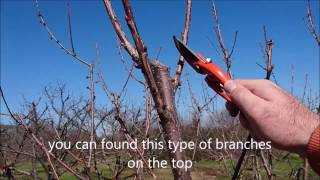
Proper pruning techniques remove excessive branches and foliage, allowing more sunlight to reach the inner parts of the cherry tree. This increased sunlight penetration stimulates fruit production and improves the overall quality of the harvest.
4. Maintenance of Optimal Fruit Size
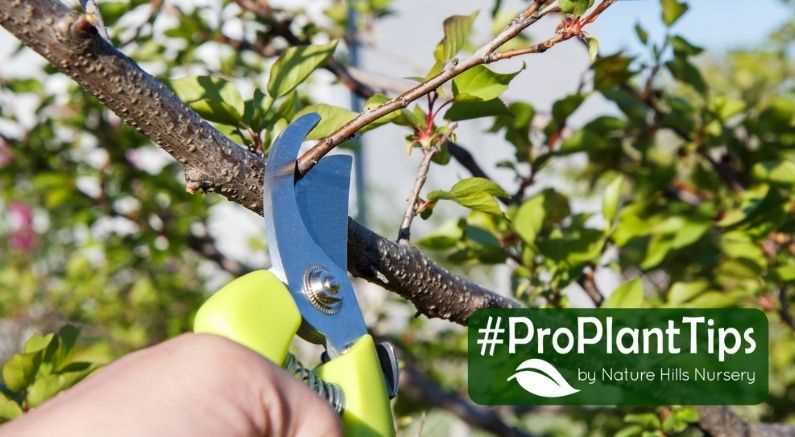
By strategically removing certain branches, cherry tree pruning can help maintain optimal fruit size. Thinning out crowded branches allows the remaining fruits to have more space to grow, resulting in larger, healthier cherries.
5. Prevention of Pest Infestations
Regular cherry tree pruning reduces the risk of pest infestations. By removing dead wood and diseased branches, you eliminate potential hiding places and breeding grounds for pests. Pruning also improves pest management by increasing access to the tree for beneficial insects that prey on common cherry pests.
6. Longevity and Overall Health
Pruning helps prolong the lifespan of cherry trees by promoting proper growth and preventing the spread of diseases. By removing weak or damaged branches, you improve the overall vigor and health of the tree, ultimately extending its productive years.
7. Easy Harvesting
Properly pruned cherry trees have a more open canopy, making harvesting easier and more efficient. With clear access to the fruit, you can pick cherries without damaging the tree or disturbing its structure.
8. Aesthetic Appeal
Pruning cherry trees not only improves their health and productivity but also enhances their beauty. Well-maintained trees with a balanced and tidy structure can add aesthetic appeal to any orchard or garden.
Overall, cherry tree pruning is an essential management practice that offers numerous benefits. From improved tree structure and increased sunlight penetration to pest prevention and enhanced aesthetics, it plays a crucial role in maintaining healthy and productive cherry orchards.
Understanding Cherry Tree Pruning Techniques
Pruning is an essential aspect of cherry tree care. It helps ensure the health, growth, and productivity of the tree. Different techniques can be used to prune cherry trees based on their unique characteristics.
1. Training Pruning
Training pruning is done to establish the basic tree structure during the early years of growth. It involves shaping the tree by selecting the main branches and removing any undesirable or weak ones. This helps create a strong framework for the tree to support future growth and fruit production.
2. Thinning Pruning
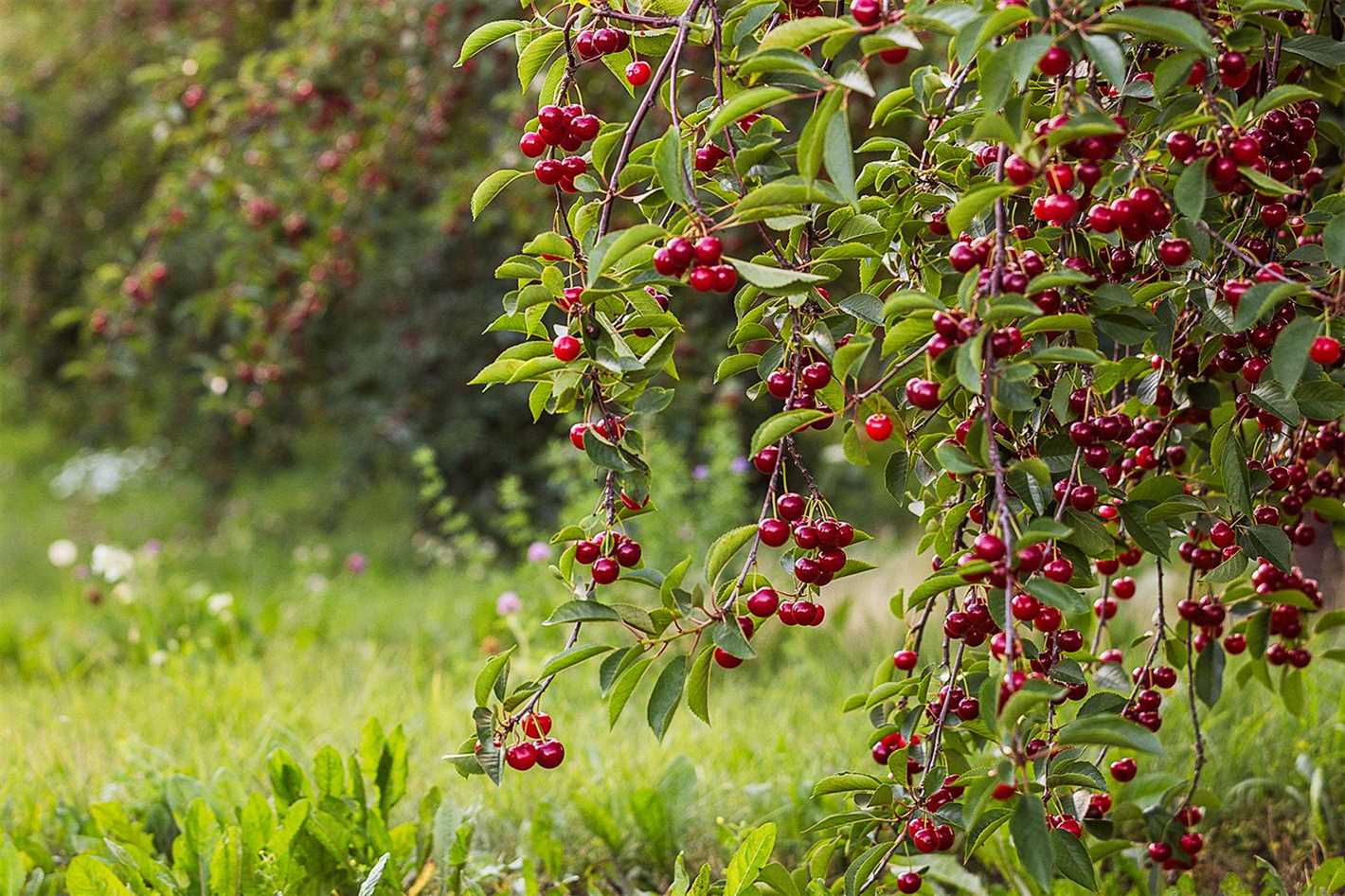
Thinning pruning involves selectively removing some of the branches and shoots to allow more light and airflow into the canopy. This helps reduce the risk of disease and promotes the development of high-quality fruit. Thinning also helps prevent overcrowding, which can lead to smaller fruits and increased vulnerability to pests and diseases.
3. Renewal Pruning
Renewal pruning is performed on mature cherry trees to rejuvenate them and stimulate new growth. It involves the removal of older, non-productive branches to make room for younger, more vigorous ones. Renewal pruning helps maintain the productivity and longevity of the tree.
4. Heading Pruning
Heading pruning is used to control the height of the cherry tree and promote branching. It involves cutting back the terminal buds or branches to encourage lateral growth. Heading pruning is especially useful for maintaining the tree’s size in small spaces or for training it into specific shapes.
5. Structural Pruning
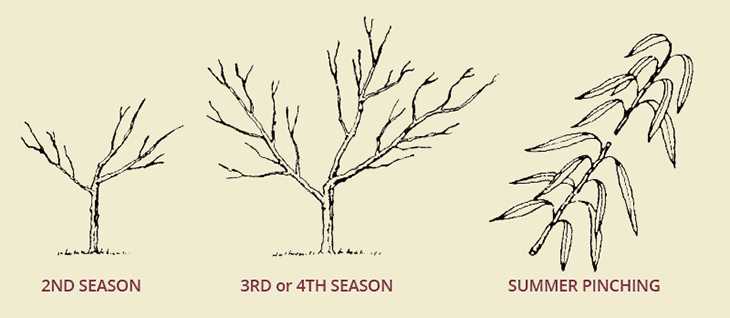
Structural pruning is done to correct any structural issues in the cherry tree. It involves removing any weak, crossing, or rubbing branches that can cause damage or limit the tree’s growth. Structural pruning helps improve the tree’s stability and overall health.
6. Pruning Tools
When pruning cherry trees, it is important to use the right tools to ensure clean and precise cuts. Some commonly used pruning tools for cherry trees include bypass pruners, loppers, pruning saws, and pole pruners. It is important to keep the tools clean and sharp to prevent any damage to the tree during pruning.
In conclusion, understanding the different cherry tree pruning techniques is essential for maintaining the health and productivity of the tree. By following the appropriate pruning methods, cherry tree owners can ensure the growth of high-quality fruit and enjoy a healthy and beautiful tree.
When to Prune Cherry Trees
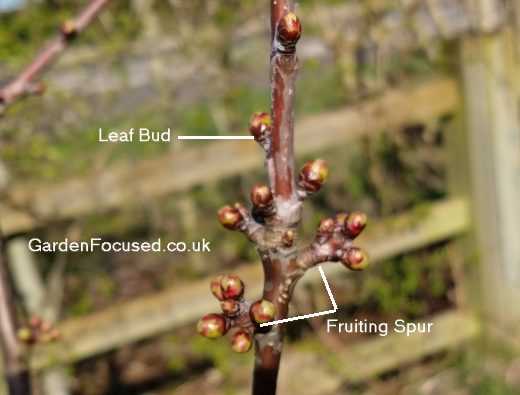
Pruning cherry trees at the right time is crucial for their overall health and productivity. By understanding the optimal timing for pruning, you can maximize the benefits and minimize any potential risks to the tree.
Timing
The ideal time to prune cherry trees is during their dormant period, which is typically in late winter or early spring before they start to bud. Pruning during this time allows the tree to heal wounds quickly and reduces the risk of disease or pest infestation.
It is important to avoid pruning cherry trees during the fall, as this can stimulate new growth that may not have enough time to properly harden off before winter sets in. This can leave the tree vulnerable to frost damage.
Signs that Pruning is Needed
There are several signs that indicate that it is time to prune your cherry tree:
- Dead, damaged, or diseased branches: Pruning these branches promotes healthy growth and prevents the spread of disease.
- Crossing or rubbing branches: These branches can cause damage and inhibit proper air circulation within the tree.
- Overgrown or crowded branches: Thinning out the canopy allows sunlight and air to reach all parts of the tree, improving fruit production and reducing the risk of fungal and bacterial infections.
- Water sprouts or suckers: These fast-growing shoots can weaken the tree and should be removed.
- Non-productive branches: Pruning can help redirect energy towards more productive branches, resulting in a more abundant harvest.
Pruning Techniques
When pruning cherry trees, it is important to use proper pruning techniques to avoid damaging the tree and promoting healthy growth. Some key techniques include:
- Using sharp, clean tools: This helps to make clean cuts and reduces the risk of introducing pathogens to the tree.
- Pruning at a 45-degree angle: This helps the tree heal more quickly and prevents water from collecting on the wound.
- Starting with the 3 Ds: Begin by removing dead, damaged, and diseased branches before moving on to other pruning tasks.
- Thinning out the canopy: Remove overcrowded or crossing branches to improve air circulation and sunlight penetration.
Remember to always consult a professional arborist or horticulturist if you are unsure about when or how to prune your cherry trees. They can provide guidance specific to your tree’s needs and help ensure its long-term health and productivity.
Factors to Consider when Pruning Cherry Trees
- Timing: Pruning should ideally be done during the dormant season, which is typically in late winter or early spring. This allows the tree to heal quickly and reduces the risk of disease or pest infestation.
- Age and Health: The age and health of the cherry tree should be taken into consideration when deciding how much to prune. Young trees may require lighter pruning to encourage growth, while older or damaged trees may require more extensive pruning to remove diseased or dead wood.
- Tree Shape: The natural shape of the cherry tree should also be considered when pruning. Cherry trees typically have an open, spreading habit, and pruning should aim to maintain this shape while removing any crossed, crowded, or poorly positioned branches.
- Pruning Objectives: The goals of pruning should be clearly defined before starting the process. This can include improving air circulation, maintaining tree size, promoting fruit production, or enhancing the tree’s overall appearance.
- Tools: Choosing the proper tools for pruning is important to ensure clean and precise cuts. Sharp, clean pruning shears and saws should be used to avoid damaging the tree and allowing for quicker healing.
- Techniques: Different pruning techniques can be employed depending on the desired outcome. These may include thinning cuts to remove excess branches, heading cuts to control the tree’s size, or shaping cuts to maintain the tree’s form.
- Time Investment: Pruning cherry trees requires time and patience. It is important to allocate sufficient time to complete the pruning process thoroughly and with care.
- Experience and Expertise: Pruning cherry trees can be a complex task, and it is beneficial to have prior experience or seek advice from a professional arborist. They can provide guidance on proper techniques and help avoid common mistakes.
Common Pruning Mistakes to Avoid
- Pruning at the wrong time: Timing is crucial when it comes to cherry tree pruning. Pruning too early in the season can cause excessive sap flow and make the tree more susceptible to diseases. On the other hand, pruning too late may result in weak growth and reduced fruit production. It is important to prune cherry trees during their dormant period, typically in late winter or early spring.
- Over-pruning: Excessive pruning can weaken the cherry tree and result in stunted growth. It is important to strike a balance between removing unnecessary branches and preserving the overall structure of the tree. Avoid removing more than 30% of the tree’s foliage in a single pruning session.
- Ignoring pruning cuts: Pruning cuts should be made at the appropriate locations to encourage proper healing and minimize the risk of disease. Avoid leaving stubs or making flush cuts. Instead, make clean cuts just outside the branch collar, which is the slightly swollen area where the branch meets the trunk.
- Not sterilizing pruning tools: Pruning tools, such as shears and saws, can spread diseases from one tree to another if not properly sterilized between cuts. Disinfect tools with a solution of 10% bleach or rubbing alcohol before and after pruning each tree. This helps prevent the transmission of diseases and promotes the overall health of the cherry trees.
- Ignoring safety precautions: Pruning can be a physically demanding task, and it is important to prioritize safety. Always wear protective gear, such as gloves and safety glasses, to prevent injuries. Additionally, use caution when working on ladders or heights, and be aware of potential hazards, such as falling branches.
Proper Tools for Cherry Tree Pruning
When it comes to pruning a cherry tree, having the right tools is crucial for ensuring the health and vitality of the tree. The following are some of the essential tools that are commonly used for cherry tree pruning:
- Pruning Shears: Pruning shears, also known as secateurs, are essential for cutting smaller branches and twigs. Look for a pair of pruning shears with sharp blades and a comfortable grip to make the pruning process easier and more efficient.
- Loppers: Loppers are larger and more powerful than pruning shears, making them ideal for cutting thicker branches. They usually have long handles and a bypass or anvil cutting action, allowing you to easily trim branches that are out of reach.
- Pruning Saw: A pruning saw is necessary for cutting larger branches that cannot be easily handled by pruning shears or loppers. Look for a pruning saw with a curved blade and a comfortable handle to ensure ease of use and precision while cutting.
- Pole Pruner: For pruning high branches, a pole pruner is a must-have tool. It consists of a long pole with a pruning saw or pruning shears at the end, allowing you to prune branches that are difficult to reach from the ground.
- Gloves: Protective gloves are essential when pruning cherry trees to protect your hands from thorns, cuts, and other injuries. Choose gloves that are durable, comfortable, and provide good grip to ensure safety while handling sharp tools.
- Sterilization Solution: To prevent the spread of diseases and pests, it’s important to sterilize your pruning tools before and after use. Use a sterilization solution or rubbing alcohol to disinfect the blades of your tools, minimizing the risk of transmitting any harmful pathogens.
Remember: Before using any pruning tool, make sure it is clean and in good working condition. Dull or damaged blades can cause unnecessary damage to the tree, so it’s important to regularly inspect and maintain your tools.
By having the proper tools for cherry tree pruning and knowing how to use them correctly, you can effectively maintain the health and shape of your cherry tree, promoting its growth and productivity.
Hiring Professional Cherry Pruning Services
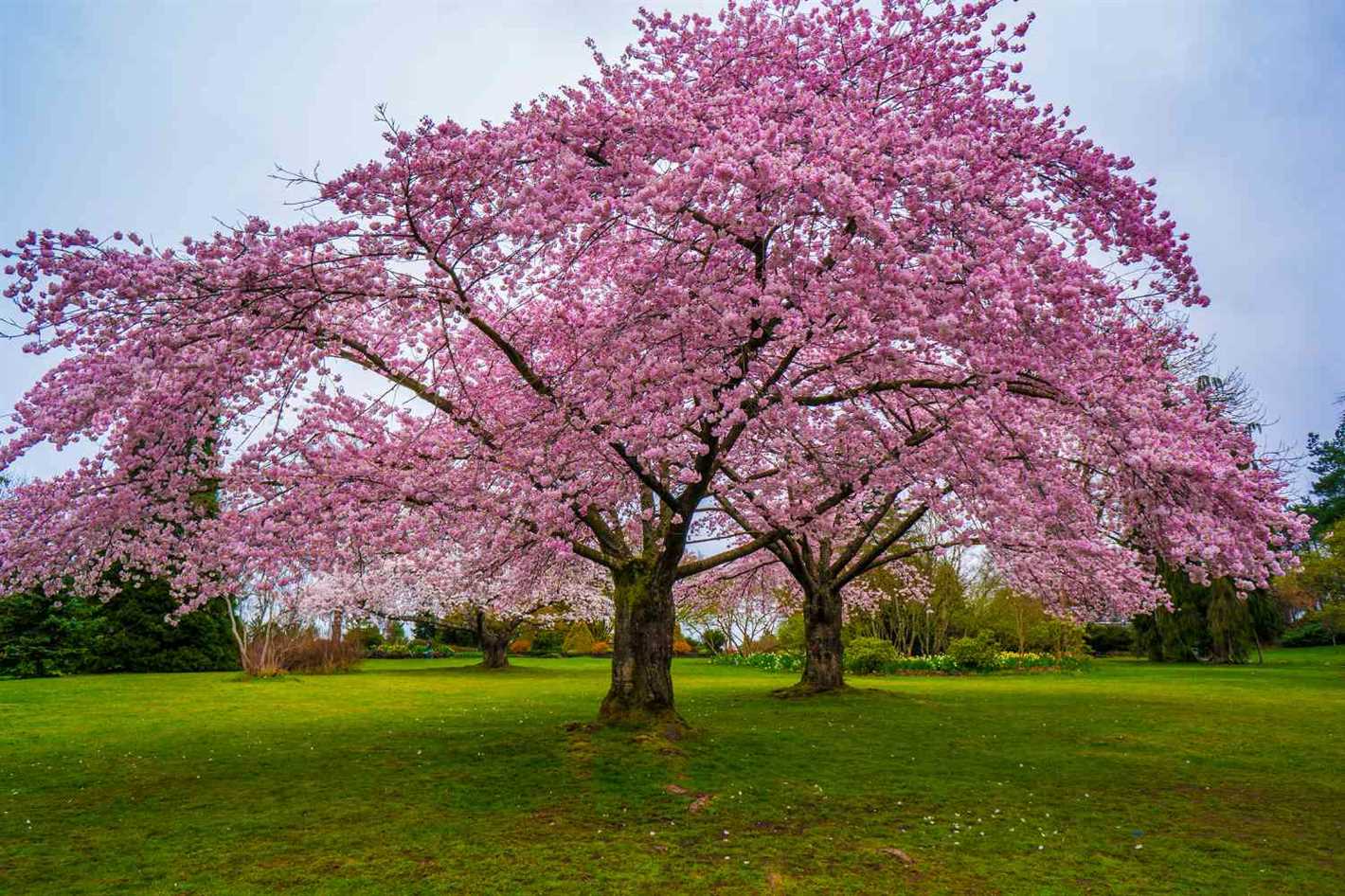
When it comes to pruning your cherry trees, it’s important to understand the unique characteristics of cherry tree pruning and the skills required to do it properly. While some people may choose to prune their cherry trees themselves, hiring professional cherry pruning services can offer several advantages.
1. Expertise and Experience
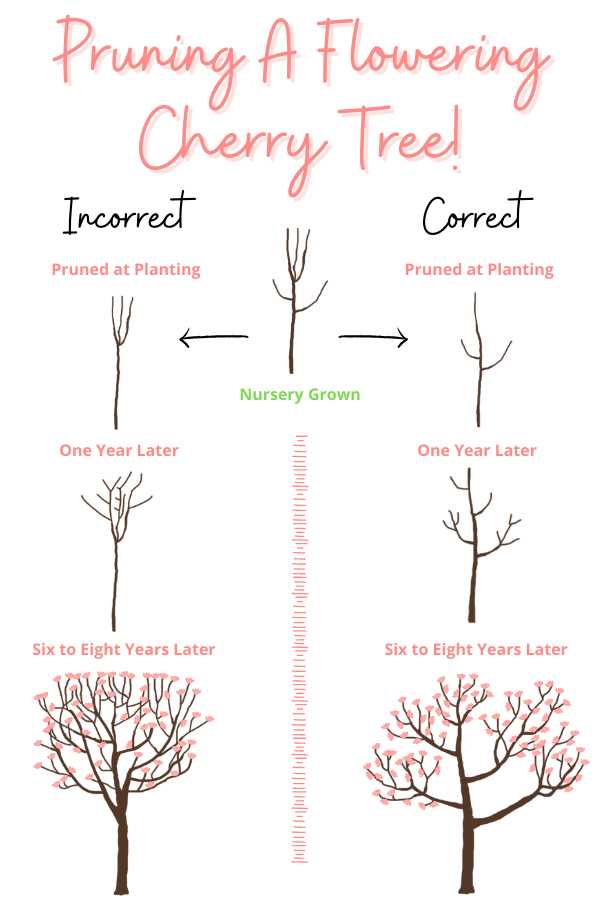
Professional cherry pruning services have the knowledge and experience necessary to prune cherry trees effectively. They understand the specific needs and requirements of cherry trees and can tailor their pruning techniques to ensure optimal growth and fruit production. Their expertise allows them to identify and address any issues or problems that may arise during the pruning process.
2. Time and Efficiency
Pruning cherry trees can be a time-consuming task, especially if you have multiple trees or a large orchard. By hiring professional cherry pruning services, you can save yourself time and effort. These professionals have the proper tools and equipment to complete the pruning process efficiently, allowing you to focus on other important tasks.
3. Safety
Pruning cherry trees can be dangerous, especially when working at heights. Professional cherry pruning services have the necessary safety equipment and training to ensure the safety of both their workers and your property. By hiring professionals, you can avoid the risk of accidents and injuries.
4. Proper Tools and Resources
Professional cherry pruning services are equipped with the proper tools and resources to prune cherry trees effectively. They have access to high-quality pruning shears, saws, ladders, and other equipment necessary for the job. Using the right tools can make the pruning process more efficient and result in healthier trees.
5. Tree Health and Longevity
Proper pruning is crucial for the health and longevity of cherry trees. Professional cherry pruning services understand the importance of maintaining the overall health of the tree while promoting fruit production. By hiring professionals, you can ensure that your cherry trees receive the proper care and pruning techniques to thrive for years to come.
Conclusion
While some individuals may attempt to prune their cherry trees themselves, hiring professional cherry pruning services can offer numerous benefits. The expertise, experience, and proper tools that professionals bring to the job can result in healthier trees, increased fruit production, and a safer working environment. Consider hiring professional cherry pruning services for all your cherry tree pruning needs.
Question-answer:
What is cherry pruning?
Cherry pruning is a process of trimming and shaping cherry trees to maintain their health, productivity, and overall appearance.
Why is cherry pruning important?
Cherry pruning is essential for several reasons. It helps maintain the tree’s size, shape, and structure, improves air circulation and sunlight penetration, promotes fruit production, and prevents the spread of diseases and pests.
When should cherry trees be pruned?
Cherry trees should be pruned during the dormant season, which is typically in late winter or early spring before new growth begins. Pruning during this time ensures minimal stress to the tree and helps stimulate healthy growth.
How often should cherry trees be pruned?
Cherry trees should be pruned annually to remove dead or diseased branches, promote new growth, and maintain their shape and size. Additionally, light pruning may be done during the growing season to remove water sprouts or suckers.
Can cherry trees be pruned during the summer?
While it is generally recommended to prune cherry trees during the dormant season, light pruning can be done in the summer if necessary. However, heavy pruning during this time can stress the tree and reduce fruit production.
What are some common pruning techniques for cherry trees?
Some common pruning techniques for cherry trees include removing dead or dying branches, thinning out crowded areas to improve air circulation, training young trees by pruning to a central leader or open center shape, and making clean cuts to prevent damage and disease.
What should be done after pruning a cherry tree?
After pruning a cherry tree, it is important to clean up and dispose of any pruned branches or debris. This helps prevent the spread of diseases and pests. Additionally, applying a thin layer of mulch around the base of the tree can help retain moisture and suppress weed growth.







